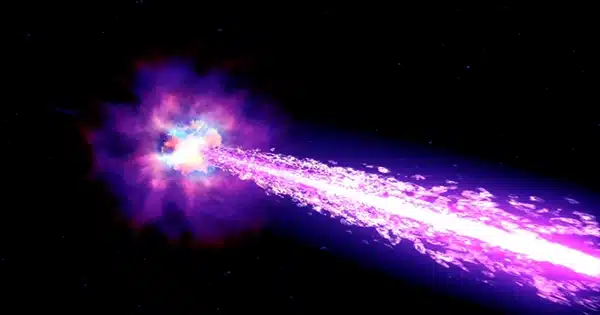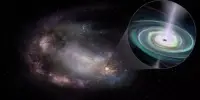The brightest gamma-ray burst (known as GRB 221009A) ever detected by humans has been studied by the Institute of High Energy Physics (IHEP) of the Chinese Academy of Sciences (CAS) and about 40 other study organizations globally.
The ability to precisely quantify how bright the burst was and how much energy it unleashed, which is the key to understanding this momentous occurrence, was made possible by two Chinese satellite telescopes, Insight-HXMT and GECAM-C.
Another ground-based observatory run by IHEP, the Large High Altitude Air Shower Observatory (LHAASO), observed the unprecedented gamma-ray explosion alongside the Insight-HXMT and GECAM-C telescopes. With its huge amount of very high energy observation data, LHAASO made several significant first discoveries, which will be published subsequently.
GRBs, the most energetic explosion phenomenon in the universe, could be produced by the core collapse of a massive star, which usually lasts longer than two seconds, or by the merger of two compact stars, such as neutron stars and black holes, which usually lasts less than two seconds and emits gravitational waves. GRB 221009A is a member of the group.

An IHEP-led international team of scientists from over 30 institutes in China, the United States, Italy, France, and Germany made precise measurements of the prompt emission and early afterglow of this unheard-of burst in the hard X-ray and soft gamma energy bands using the Insight-HXMT and GECAM-C space telescopes.
While many other space telescopes were unable to measure such a brilliant event, GECAM-C was operating in a unique observation mode at the time of this GRB’s arrival that was capable of capturing exceptionally bright GRBs, such as the brightest portion of GRB 221009A.
“Based on the precise data obtained by GECAM-C, we discovered that this burst set new records for both observed brightness and isotropic-equivalent energy of all detected bursts, making this burst truly exceptional,” said Xiong Shaolin, the GECAM-C Principle Investigator who conducted this research.
The isotropic-equivalent energy of this explosion is greater than 1055 erg, or roughly the entire rest mass energy of 8 solar masses, and it is 50 times brighter than the previous record holder. Just a minute or so later, such a tremendous amount of energy was unleashed, according to Xiong.
China’s first X-ray space observatory, Insight-HXMT, was created to study the Milky Way’s X-ray source. It was expanded, though, to keep track of gamma rays all over the heavens, particularly GRBs.
Thanks to its extremely wide detection region in the MeV energy range, Insight-HXMT made an unambiguous measurement of GRB 221009A for its precursor and early afterglow, according to Zhang Shuangnan, the project’s principal investigator.
“Luckily we have Insight-HXMT and GECAM-C [which are] complementary to each other, so that we can have a full picture of this precious burst,” he said.
According to Insight-HXMT and GECAM-C observations, the early afterglow of GRB 221009A looked to transition from slow decay to rapid decay very early in time, implying that this burst propelled an extremely narrow and luminous jet directly aiming at us.
Zhang Bing, a professor at the University of Nevada, Las Vegas, who oversaw the theoretical explanation in this study, said that these results “shed new light on the physics of these energetic explosions in the universe.”
According to Zhang Bing, “More detailed modeling is needed to understand how GRB engines manage to collide the jets in some cases to produce such a huge isotropic equivalent energy.”














